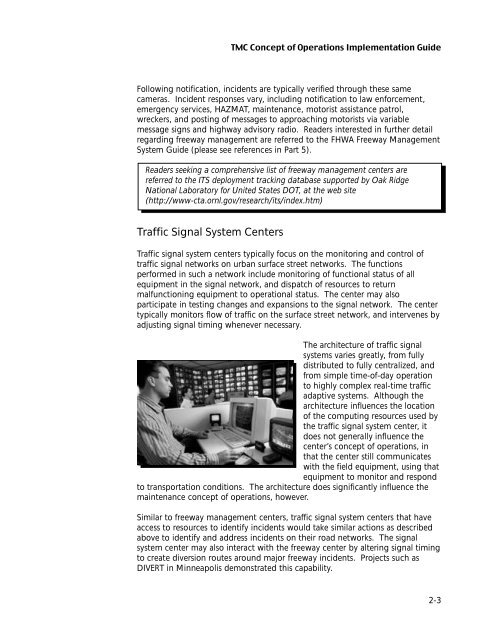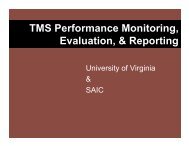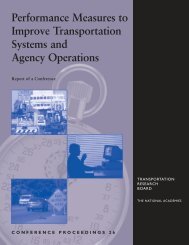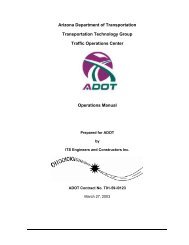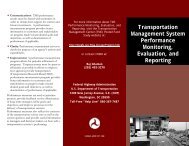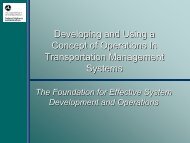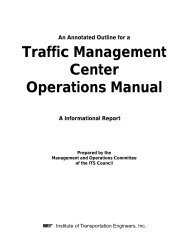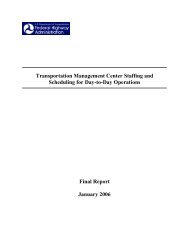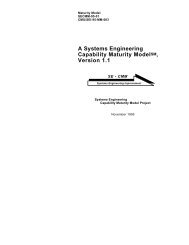Transportation Management Center Concepts of Operations
Transportation Management Center Concepts of Operations
Transportation Management Center Concepts of Operations
- No tags were found...
You also want an ePaper? Increase the reach of your titles
YUMPU automatically turns print PDFs into web optimized ePapers that Google loves.
Following notification, incidents are typically verified through these samecameras. Incident responses vary, including notification to law enforcement,emergency services, HAZMAT, maintenance, motorist assistance patrol,wreckers, and posting <strong>of</strong> messages to approaching motorists via variablemessage signs and highway advisory radio. Readers interested in further detailregarding freeway management are referred to the FHWA Freeway <strong>Management</strong>System Guide (please see references in Part 5).Readers seeking a comprehensive list <strong>of</strong> freeway management centers arereferred to the ITS deployment tracking database supported by Oak RidgeNational Laboratory for United States DOT, at the web site(http://www-cta.ornl.gov/research/its/index.htm)Traffic Signal System <strong>Center</strong>sTraffic signal system centers typically focus on the monitoring and control <strong>of</strong>traffic signal networks on urban surface street networks. The functionsperformed in such a network include monitoring <strong>of</strong> functional status <strong>of</strong> allequipment in the signal network, and dispatch <strong>of</strong> resources to returnmalfunctioning equipment to operational status. The center may alsoparticipate in testing changes and expansions to the signal network. The centertypically monitors flow <strong>of</strong> traffic on the surface street network, and intervenes byadjusting signal timing whenever necessary.The architecture <strong>of</strong> traffic signalsystems varies greatly, from fullydistributed to fully centralized, andfrom simple time-<strong>of</strong>-day operationto highly complex real-time trafficadaptive systems. Although thearchitecture influences the location<strong>of</strong> the computing resources used bythe traffic signal system center, itdoes not generally influence thecenter’s concept <strong>of</strong> operations, inthat the center still communicateswith the field equipment, using thatequipment to monitor and respondto transportation conditions. The architecture does significantly influence themaintenance concept <strong>of</strong> operations, however.Similar to freeway management centers, traffic signal system centers that haveaccess to resources to identify incidents would take similar actions as describedabove to identify and address incidents on their road networks. The signalsystem center may also interact with the freeway center by altering signal timingto create diversion routes around major freeway incidents. Projects such asDIVERT in Minneapolis demonstrated this capability.2-3


